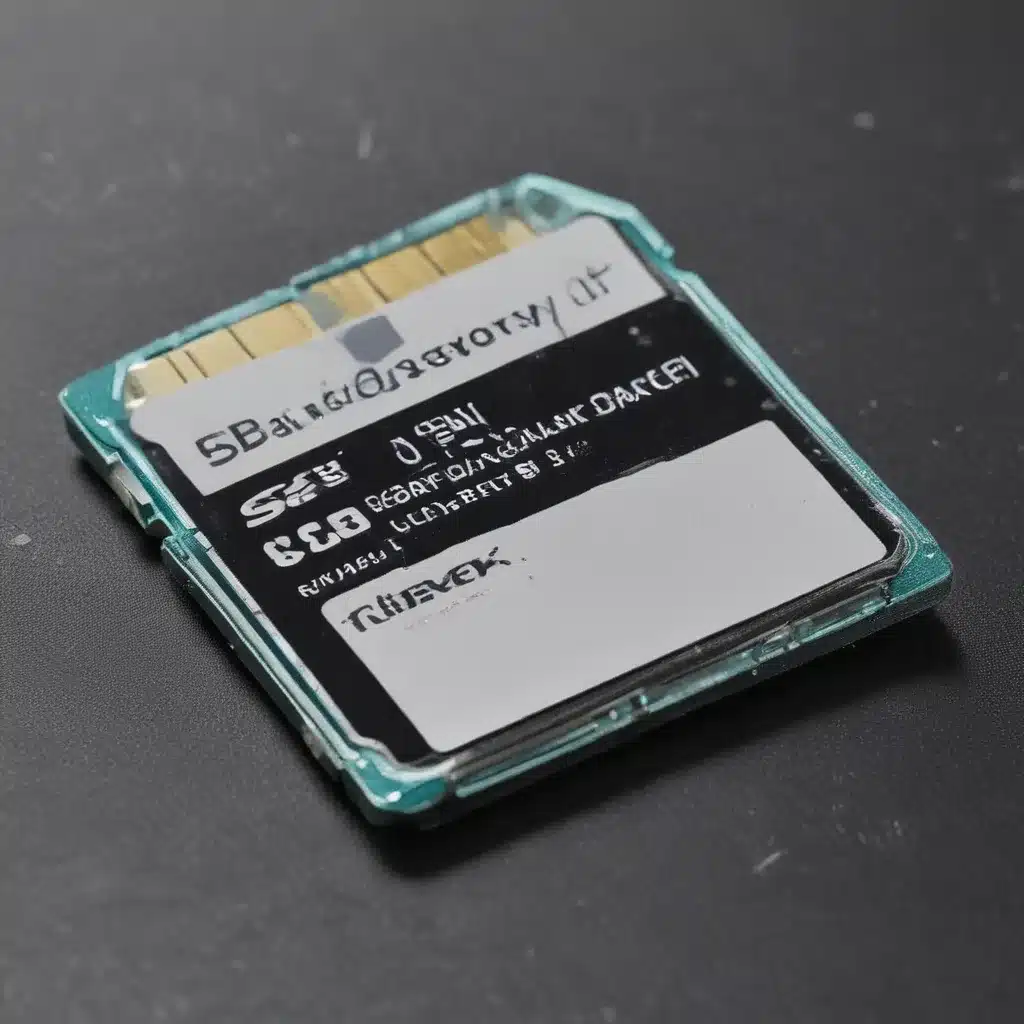The Dreaded Blank SD Card
It’s a scenario no photographer or camera enthusiast ever wants to encounter – you pop open your camera, eager to review the stunning shots you captured during your latest adventure, only to be met with a blank, lifeless SD card staring back at you. Your heart sinks as the reality sets in – all those precious memories, gone.
I’ve been there myself, and I can tell you from experience, it’s a gut-wrenching feeling. But before you throw in the towel and resign yourself to a lost cause, take a deep breath and know that all hope is not lost. With the right approach and a bit of determination, you may just be able to recover that precious data and salvage your photos.
Troubleshooting the Blank SD Card
The first step is to try and determine what caused the SD card to go blank in the first place. Was it a physical impact or sudden drop that caused the internal components to malfunction? Or perhaps a software glitch that corrupted the file structure? Whatever the culprit, understanding the root of the problem can help guide your recovery efforts.
One common issue I’ve encountered is that the SD card’s file system becomes corrupted, rendering the contents inaccessible. This can happen for a variety of reasons, from sudden power loss during a transfer, to a faulty card reader, or even a virus or malware infection. [1] In these cases, you may still be able to recover the data, but it will require a more specialized data recovery approach.
Another potential cause could be a hardware failure within the SD card itself. Perhaps a component has become dislodged or damaged, or the card’s internal memory is beginning to fail. [2] This type of physical damage can be trickier to address, but with the right tools and expertise, it’s not necessarily a lost cause.
The key is to act quickly and avoid writing any new data to the card, which could overwrite the original files and make recovery even more challenging. [3] So resist the urge to format the card or try transferring the “blank” contents to your computer – that could seal the fate of your precious photos.
Attempt Data Recovery
Now, the moment of truth – it’s time to try and recover that data. And the good news is, there are a variety of tools and techniques at your disposal, each with its own strengths and weaknesses.
One popular option is to use a specialized data recovery software like Stellar Phoenix, Zar X, or EaseUS Data Recovery. [1] These programs are designed to scan the SD card’s file system and underlying structure, identifying and extracting any recoverable data. The process can be time-consuming, but it’s often a reliable way to get your photos back.
Another approach is to enlist the help of a professional data recovery service. These experts have access to advanced equipment and techniques that can sometimes salvage data from even the most severely damaged or corrupted storage devices. [4] While this route may come with a heftier price tag, it could be worth it if the photos are truly irreplaceable.
If you’re feeling adventurous (and technically inclined), you could even try a DIY data recovery method. This might involve using a hex editor to manually inspect and manipulate the SD card’s file structure, or even going so far as to disassemble the card and attempt a physical repair. [5] But be warned, these techniques are not for the faint of heart and require a delicate touch.
The Verdict: A Tale of Triumph and Surprise
In the end, the outcome of your data recovery efforts may surprise you. I once had a client who had exhausted every option, convinced that her vacation photos were lost forever. But after trying several recovery tools, my colleague managed to not only retrieve the files, but also uncover a hidden gem – a massive 8-gigabyte image that had been the root cause of the whole debacle. [6]
It just goes to show that you should never give up hope. With a bit of perseverance and the right tools, you may just be able to resurrect those lost memories and capture the perfect ending to your photography adventure.
So, if you’re ever faced with a daunting blank SD card, remember: attempt data recovery before it’s too late. Who knows what unexpected treasures you might uncover along the way?
[1] https://www.reddit.com/r/photography/comments/652qrc/please_help_ive_been_trying_to_recover_data_from/
[2] https://community.usa.canon.com/t5/EOS-DSLR-Mirrorless-Cameras/Pictures-disappeared-from-memory-card-SOLVED-updated-at-bottom/m-p/246380
[3] https://community.gopro.com/s/question/0D53b00008BtZsoCAF/files-not-showing-up-in-file-explorer?language=en_US
[4] https://www.quora.com/I-have-formatted-my-memory-card-4-times-but-the-files-automatically-come-back-again-What-should-I-do
[5] https://forums.androidcentral.com/threads/galaxy-s3-boot-loop-and-cant-enter-recovery-mode-because-phone-autoboot.356052/page-2
[6] https://forums.sandisk.com/t/repair-corrupted-pendrive/33178













